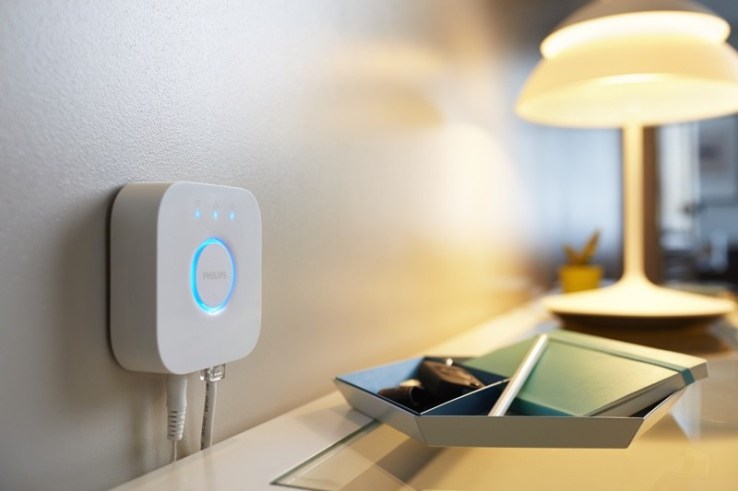
Philips added support for Apple’s HomeKit framework to its Hue smart light bulb product line. Unfortunately, existing Hue users will need to purchase a brand new bridge as the existing bridge isn’t compatible with HomeKit. With that said, here’s what to expect from the new bridge.
If you’re an iOS user, HomeKit could change the way you use your connected objects around your home. First, you can control HomeKit-compatible devices using Siri. Second, you can group them together. For instance, you can connect your garage door and light bulb together so that whenever you open or close the garage door, the light automatically switches on.
For now, the Philips Hue app only supports the Siri part — you can’t integrate Hue lights with other products. But it could change in a future software update. And if your other product supports pairing with HomeKit products, you can actually add Hue lights from their apps.
HomeKit device makers include ecobee3, Elgato, iHome, Insteon, Lutron, iDevices and Schlage. Other manufacturers are still working on updated software or hardware products.
After installing the new Hue bridge and updating the app, you can ask Siri a few things to customize your lights, such as “Hey Siri, turn all lights yellow” or “Hey Siri, set the living room lamp to 20 percent.”
The Hue Bridge 2.0 costs $60, and existing Hue owners can get a $20 discount. It will be available on October 6 as a standalone product, or in a package with updated Hue light bulbs.
The existing bridge doesn’t work with HomeKit due to hardware limitations. The new bridge doesn’t have any additional feature. It has a new app icon-shaped design and still comes in white.
The updated color bulbs are a bit brighter than the existing ones at 800 lumens instead of 600 lumens. The white bulbs also have a new brighter variant at 800 lumens instead of 750 lumens. The LightStrip was also updated. All these new bulbs come with “increased internal storage.” I’m not sure why Philips need more internal storage in your bulbs…

Comments
Post a Comment